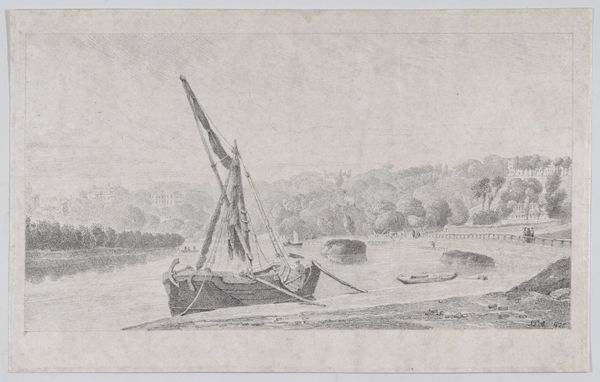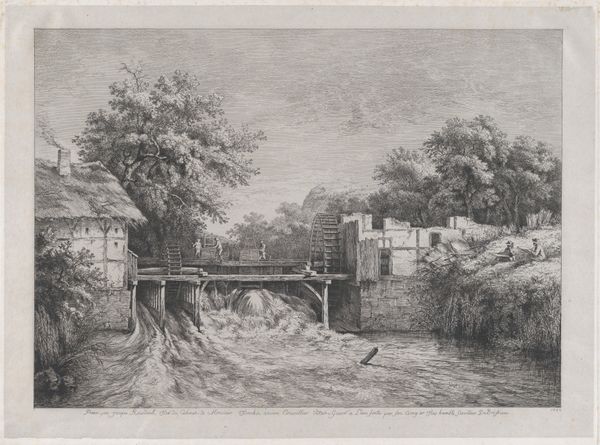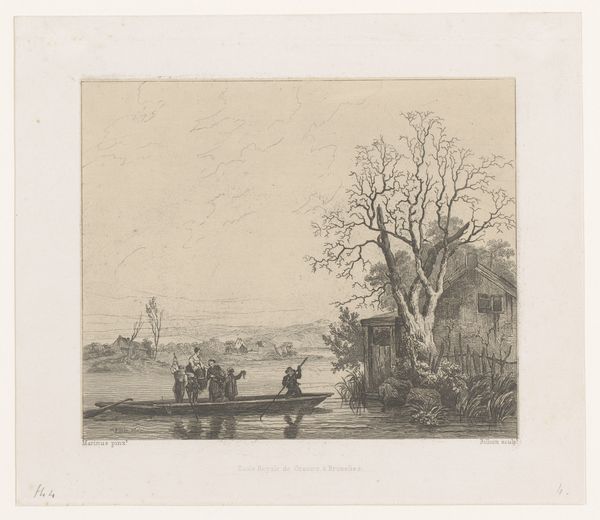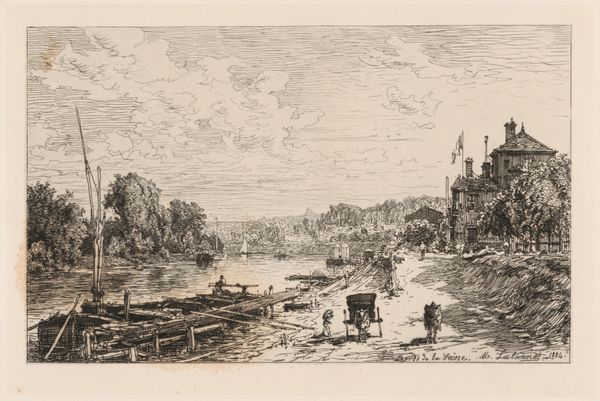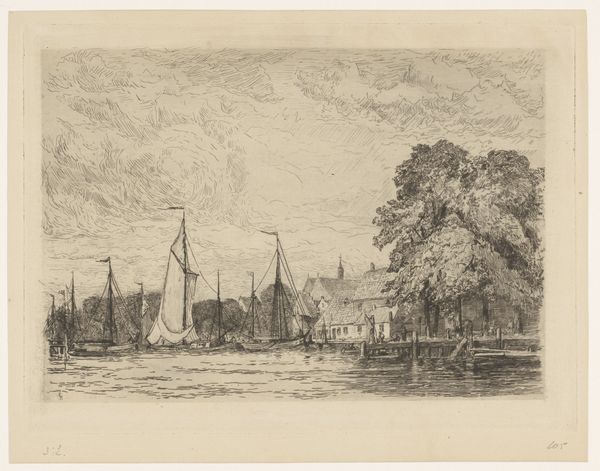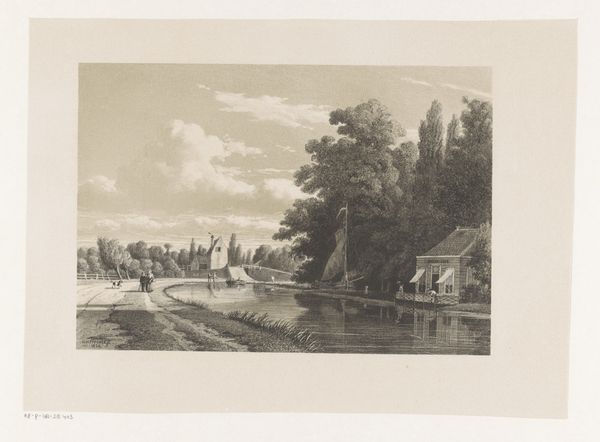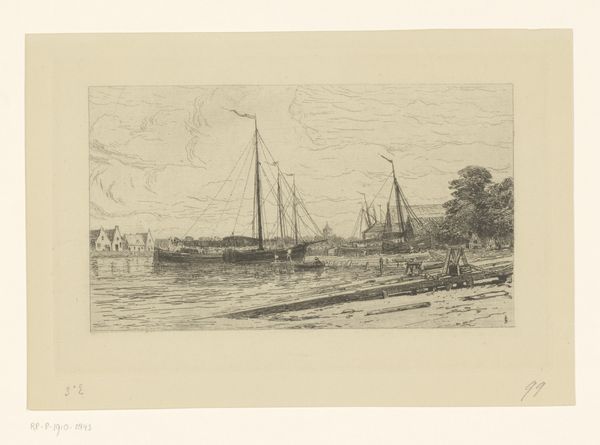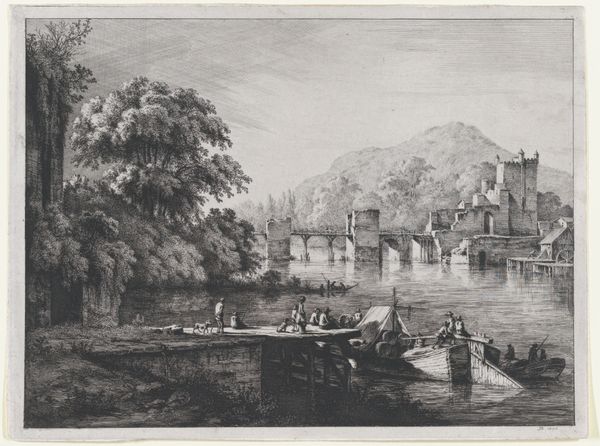
print, etching
# print
#
etching
#
landscape
Dimensions: image: 236 x 453 mm sheet: 491 x 636 mm plate: 277 x 503 mm
Copyright: National Gallery of Art: CC0 1.0
Curator: Immediately, I'm drawn to the hushed quality, like a scene observed through memory. It's melancholic, yet peaceful. Editor: Indeed. This is Charles Frederick William Mielatz's etching from 1888, titled "Untitled (Old Bridge)." Mielatz captures a waterside scene complete with cottages, boats, and of course, the aged bridge itself. Curator: The composition feels very staged, intentionally framing this ordinary bridge within a serene tableau. It raises the question of why this scene merited documentation at the time. Editor: Right. Mielatz's era, especially within the New York Etching Club to which he belonged, held a particular fascination for urban and rural landscapes, seeing in them a representation of an ideal of American life, especially against the backdrop of industrialization. Prints were increasingly accessible, democratizing art ownership and allowing a broader audience to connect with this vision. Curator: So, it's not merely a picturesque scene but a constructed vision of America? I find myself pondering the absence of visible labor here. The focus seems intentionally shifted away from the toil inherent in daily life during that period. It feels somewhat… romanticized. Editor: I think you’ve pinpointed a key tension of that time. These scenes are never neutral. Even in their beauty, they are telling a particular story about who and what is deemed worthy of representation. Consider that while images of tranquil village life abounded, the realities for many working-class communities were significantly more challenging. Curator: Knowing the history adds a necessary complexity to my initial sense of peace. Now I see it more as a curated escape than an unbiased reflection. Editor: Precisely, art never exists in a vacuum, it reflects and shapes the socio-political landscape of its time, and this scene invites us to delve into those very intersections. Curator: Yes, analyzing it with you allows me to contextualize what could be easily misconstrued without broader perspective. Editor: Exactly, now I can more thoughtfully enjoy the piece having gained some historical understanding and nuanced reflection on my initial response.
Comments
No comments
Be the first to comment and join the conversation on the ultimate creative platform.
